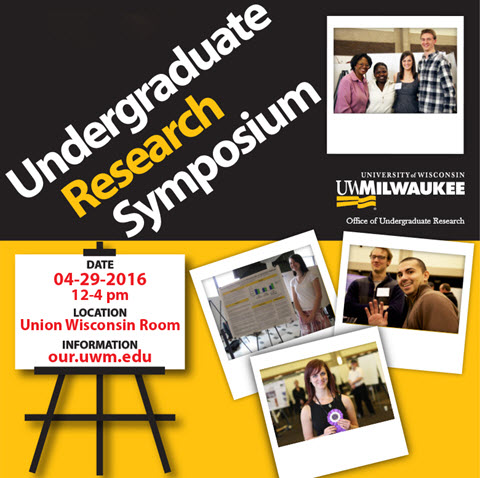Imaging of Protein Interactions Using Förster Resonance Energy Transfer and Laser Scanning Microscopy: Sample Preparation and Data Analysis
Mentor 1
Valerica Raicu
Location
Union Wisconsin Room
Start Date
29-4-2016 1:30 PM
End Date
29-4-2016 3:30 PM
Description
Nonlinear spectroscopy combined with Förster Resonance Energy Transfer (FRET) is a useful tool for the determination of distributions of molecules within biological cells. By genetically modifying baker’s yeast (Saccharomyces cerevisiae) cells, fluorescence labeling of particular receptor proteins of interest is possible in living cells. Using such cells, we are able to investigate the quaternary structure of an alpha-type mating pheromone receptor in the presence and absence of its ligand. Optical micro-spectroscopy was used to investigate this. The ability of the cognate ligand to penetrate cellular membranes. By characterizing the inherent molecules within yeast cells that are autofluorescent, extraction of the signal from a fluorescently labeled-ligand was distinguished in both the whole cell and in the cytoplasm, thus indicating that the ligand penetrated the membrane of the yeast. This finding has profound implications in developing methods of drug delivery by passing through the cellular membrane.
Imaging of Protein Interactions Using Förster Resonance Energy Transfer and Laser Scanning Microscopy: Sample Preparation and Data Analysis
Union Wisconsin Room
Nonlinear spectroscopy combined with Förster Resonance Energy Transfer (FRET) is a useful tool for the determination of distributions of molecules within biological cells. By genetically modifying baker’s yeast (Saccharomyces cerevisiae) cells, fluorescence labeling of particular receptor proteins of interest is possible in living cells. Using such cells, we are able to investigate the quaternary structure of an alpha-type mating pheromone receptor in the presence and absence of its ligand. Optical micro-spectroscopy was used to investigate this. The ability of the cognate ligand to penetrate cellular membranes. By characterizing the inherent molecules within yeast cells that are autofluorescent, extraction of the signal from a fluorescently labeled-ligand was distinguished in both the whole cell and in the cytoplasm, thus indicating that the ligand penetrated the membrane of the yeast. This finding has profound implications in developing methods of drug delivery by passing through the cellular membrane.


